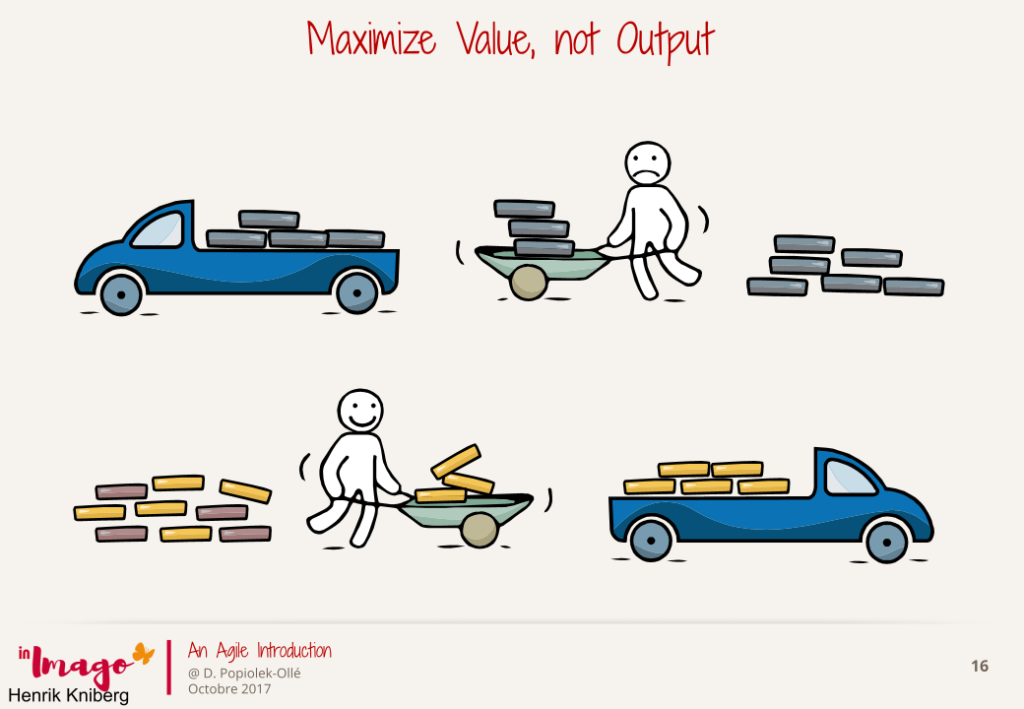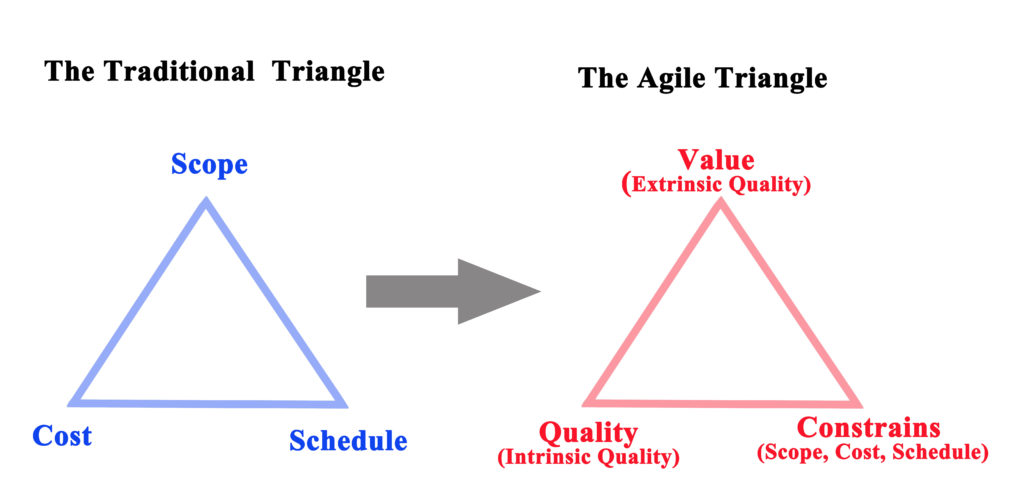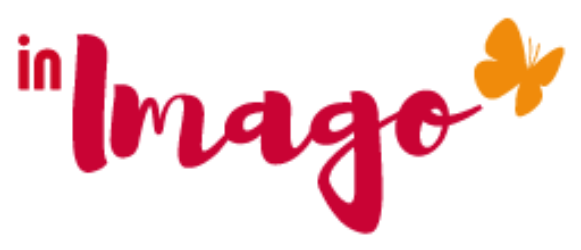The 4 values of Agility are divided into 12 principles. As and when I approach them in the transformations, I have identified success factors according to 3 focus: intensio- from a team point of view; Extensio-from a managerial or organizational point of view; Mago-from an individual point of view. The objective of this article series on the Agile Manifesto is to share these different focuses.
Principle 3- iteratively and incrementally deliver a product within 1 to 4 weeks.
While each principle is key and represents the basis of the strategic management associated with management 3.0, the creation of added value results in the creation of a product that meets a specific customer need.
This principle is broken down into 3 focuses: intensio – from a team point of view, Extensio – from a managerial or organizational point of view, Mago – from an individual point of view.
Focus Intensio: from a team point of view,
The Agile manifesto again emphasizes the realization of value-added features, in a short time, as the main indicator of success for the team.
This principle undermines our usual KPI (Key Performance Indicateur- see the définition proposed by @Laurent Granger in the blog Manager Go!) which measures the progress of a project but rarely the value-added.
For the team, the pride of a functional and useful product reinforces the desire to work in continuous delivery as the only and unique measure of their achievement. It replaces any other unit of measure of performance.
The point of vigilance here is to clearly define the reception of this added value. Indeed, one of the sticking points of Agile teams in a changing environment is the ability to agree on the validation criteria of the product delivered.
The team will often use the User Story concept to position a character with a specific usage in a given context to illustrate the value delivered. This User Story should be accompanied by factual validation criteria to ensure proper use and understanding of what is delivered. Validation criteria will also prevent customers especially during the first delivery to be frustrated by a product still far from their expectations or initial dreams.
The validation work is done jointly with the client, in order to have the grid of validated tests on both sides.
In large companies, mixing agile teams and classic project teams, the definition of what is finished is rarely clear. This causes conflict and disagreement over the quality delivered.
Focus Extensio: from an organizational point of view,
Here, management is fully on board to lead the Agile team to success. Agile values are fully expressed in the ability to deliver.
The organization is expected to provide support on two aspects.
1- First, in its ability to measure the added value and not the progress of the project.
Here, the manager will have to be “educated” to give up a KPI-oriented reporting, and to take advantage of new tools like KBI, the key Business Indicator. To know more
2- In his ability to validate what is finished
Then, when the notion of finite becomes a debate between 2 teams, it is a signal not to be missed when implementing an Agile organization. If there is debate, it is that there is an overlap in the project between two departments. The notion of “end-to-end” from the delivered product (from the developer, or the Agile department, to the end user) is probably not being respected.
A delivered product is accepted or refused by the customer. There is no half measure.

Automation at the service of Agile values
The company will equip itself here, in IT projects, with automatic tests to automate the entire delivery chain. This is the stumbling block for the so-called V-modes, where it will be necessary to chain a certain number of operations inviting specific tests at each step. It is at this stage that strategic management will be called upon to revisit their organization. He will be asked to decide once and for all on the merger of the teams to give them responsibility for the entire delivery.
This is why in Agile, an organizational model such as the Scaled Agile Framework has appeared, making it possible to limit the impact of a total reorganization of the organization.
SAFe invite the organization to identify the added value produced by each team and to assign a separate production to each team in order to favor a design by delivery train. Each wagon is an intermediate building block that we can monitor and stake out … to ensure better monitoring and regular delivery.
Remember, the agile approach is radically different. Rather than specifying everything from the beginning of the project and sticking to a very rigid framework, an agile project will be organized in iterative and incremental development cycles, to which the final customer and the user will be involved and participate actively. The center of gravity is no longer the project in itself, but the product. The goal is no longer to carry out the project, but to give birth to a finished product, perfectly matching the customer’s needs.
Therefore, teams are autonomous and self-managed production units that embrace Agile values as a delivery model.
Putting the customer at the heart of the business
To allow the emergence of added value for the customer, the management will have to take a step back and project his vision to 360 °
It will not intervene any more in the how, and the measure of this how but will take care to develop its leadership and to:
- Build the vision
- Nurture collaboration
- Promote performance
- Cultivate learning
- Ensure results
Focus Mago: from an individual point of view,
It’s our individual power of action, our Mago. It is the ability to deliver, to put into action that is referred to here by Principle 3 of the manifesto and not to put one’s task into a flow. This is the breaking point with traditional projects since the team has to deliver a potentially buyable product in 2 to 4 weeks. The autonomous team must therefore control the relations with the end user as its entire production chain. The individual will express his knowledge within the autonomous team and make his contribution.
It is also the point of breathlessness of the teams when the company does not decide a radical change in its organization. Indeed, we can notice here that the teams deliver but that the integration is not done by the teams who receive or not at the same pace.
In this case, individuals will feel trapped and forced to deliver ever faster, and more and more as the number of people not engaged in production will increase around them generating a split between those who deliver and those who think …
This ever-increasing trap tends to collapse Agile values, putting back Lean, KANBAN and Value stream mapping practices that are ultimately better suited to management that clings to its achievements.
Preserving existing organizational models is opposed to a customer-centric culture. SCRUM remains the model closest to the Agile values defended by the manifesto and the simplest to implement.
This article was conceived and written by Dominique Popiolek, leader and professional coach transformation.

